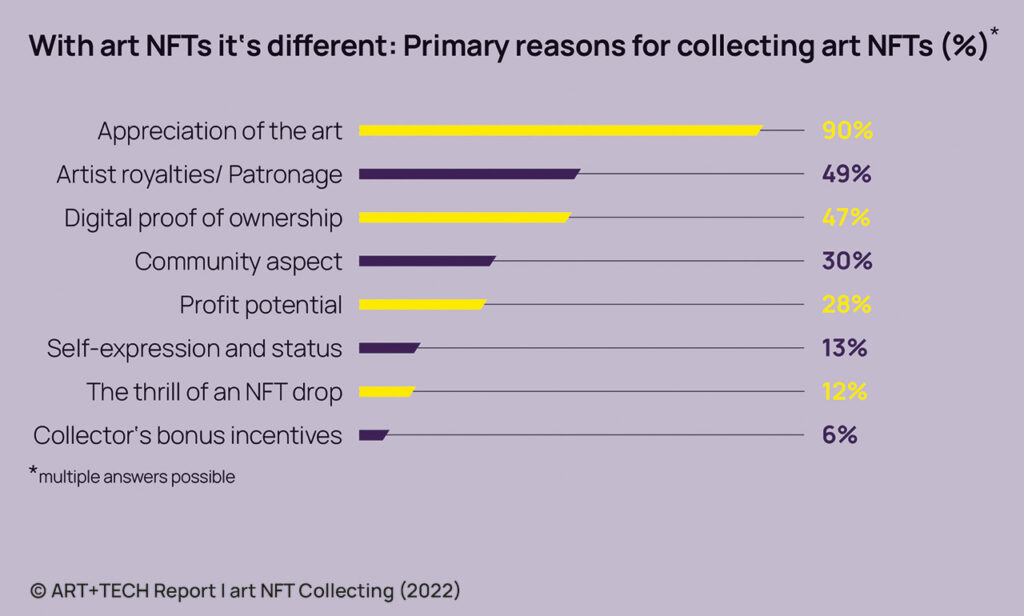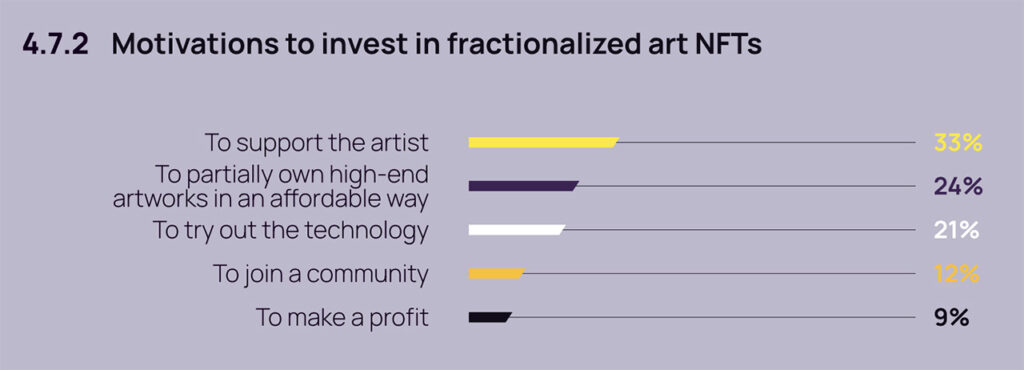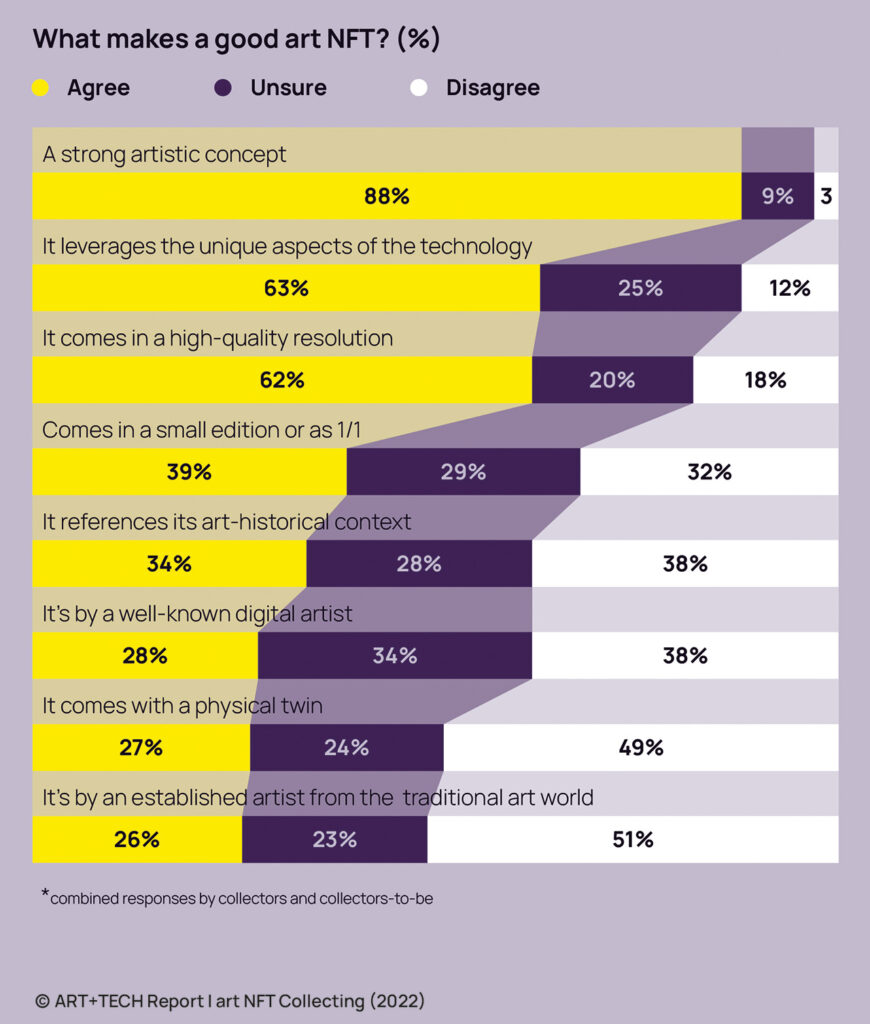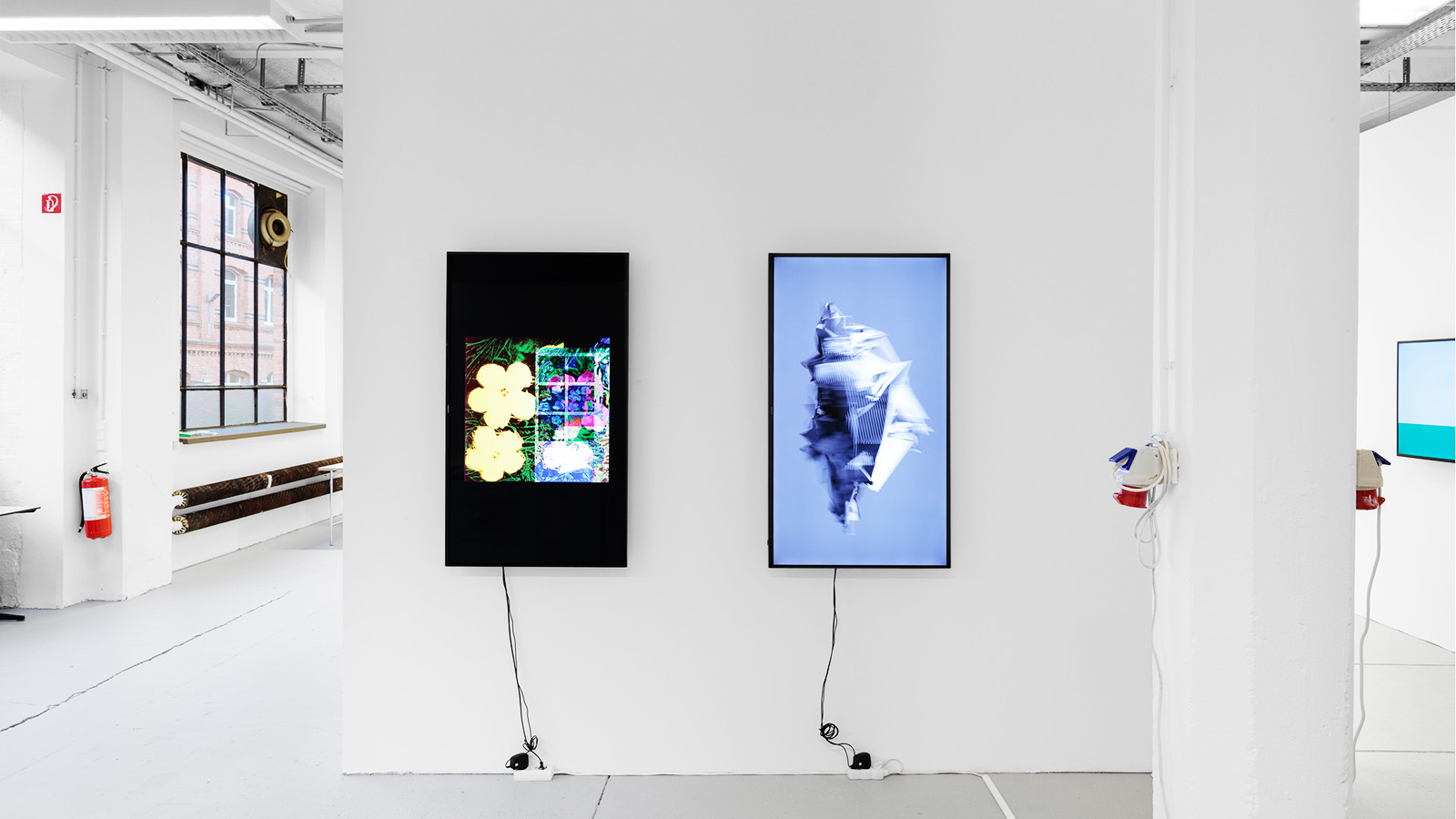It’s been a banner year for NFT sales by any measure. In 2021, the volume of NFT trade hit a massive $17.7 billion (up from $82 million in 2020), with digital collectibles enjoying an ongoing mainstreaming throughout the art and museum sectors. But while much has been made about the investment potential of NFTs, note the writers of the latest ART+TECH Report, “there has been less focus on what art NFT collecting looks like from the perspective of buyers and collectors.”
It’s why the Berlin-based researchers surveyed 306 traditional and digital art buyers to gather their sentiments and approaches to collecting NFT art. Freshly released, ART+TECH: Art NFT Collecting found that the majority of these respondents buy and collect NFT art, not for any return on investment, but chiefly for their aesthetic qualities. (In an indication of the market’s decentralized nature, this is in notable contrast to Hiscox’s recent report that saw 60 percent of those surveyed saying they bought NFTs for their value potential.) Digital proof of ownership and digital art patronage were also key push factors.

ART+TECH’s report found the majority of the surveyed collectors responded most to the artistic qualities of NFTs (90 percent), as opposed to any profit potential (28 percent) or collector’s incentives (6 percent). Image: © ART+TECH Report
Elsewhere, the report captures obstacles to NFT purchases that bear out how the field might be complex and overwhelming for some buyers, if not environmentally concerning. For digital art to gain and sustain market traction, for buyers to better engage with the NFT space, the report found, would require tackling such issues from education to curation to sustainability. Below are three key data points from the report that highlight what collectors are looking for in NFTs.
Curation please
Ironically, for a decentralized medium, 55 percent of respondents to the ART+TECH survey wanted a curated selection of art NFTs from which to make their purchases. Such curation would apparently make a vast field more approachable — even as it countermands the space’s commitment to democratization and transparency — while opening up the possibilities of developing exhibition concepts around NFT art. Certainly, NFT players could well port the practices of traditional art selling into the crypto realm, but more compelling would be how they adapt or reimagine these conventions for a crypto-centric medium.
A somewhat similar motivation to buy NFTs, indicated by 37 percent of those surveyed, is the ability to display digital art at home or in public. This correlates with the 18 percent of respondents who saw the intangibility of NFTs as an obstacle to making their first purchases.
The fractionalized potential

Aside from patronage, collectors were most motivated to make F-NFT purchases for the ability to co-own a high-end artwork for an affordable price. Image: © ART+TECH Report
Fractionalized NFTs (F-NFTs) have been emerging fast in the past few months, embodied by projects such as Particle’s Banksy sale and Belvedere Museum’s fractionalization of a Klimt. And as ART+TECH’s report found, F-NFTs are growing in favor among buyers, with 21 percent saying they’ve already made fractionalized art purchases. While lending support to the digital artist is a chief motivator here (logged by 33 percent of respondents), the ability to own a high-end work of art in an affordable way is another major driving force, offering as it does a low barrier of entry into NFT collecting.
Also worth noting here, more than half of the survey’s respondents stated that a sense of community was crucial when it comes to their NFT purchases — an aspect that F-NFTs offer with their co-ownership models.
Never mind the big names

According to the survey, whether an NFT was made by an established artist or is accompanied by a physical twin matters less compared to its artistic concept. Image: © ART+TECH Report
Just because an established artist drops NFTs, doesn’t mean that NFT buyers are swarming to buy them. ART+TECH has uncovered a mere 8 percent of collectors who purchased a NFT created by a well-known artist, bolstered by a similar finding that only 26 percent of respondents wanted a NFT that was a digital twin of a physical work. “Very clearly,” the report noted, “the prestige of being a household name is not instantly transferable when entering the art NFT space.”
For the collectors surveyed by ART+TECH, further incentives also seem irrelevant, with only 6 percent indicating bonus perks, compared to the overwhelming 90 percent touting an “appreciation for the art,” as the key reason to purchase NFTs.



